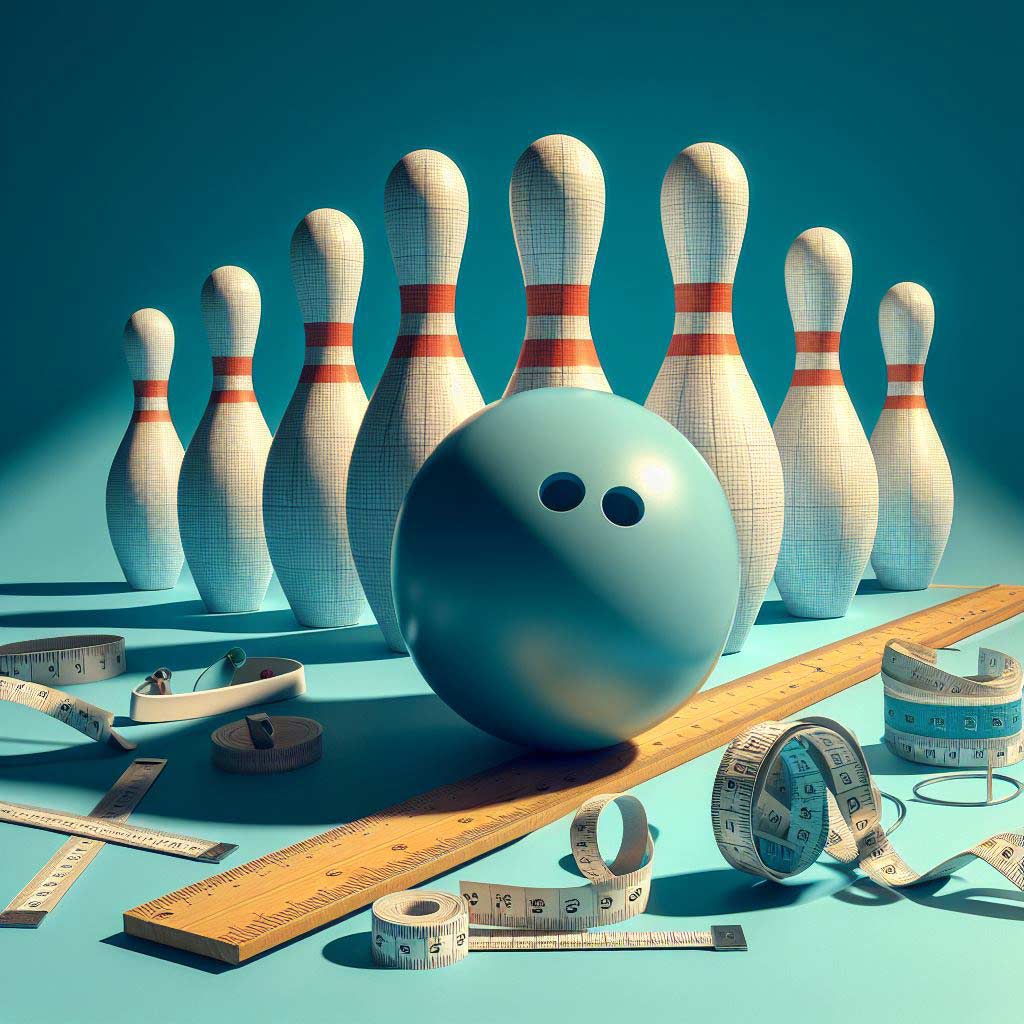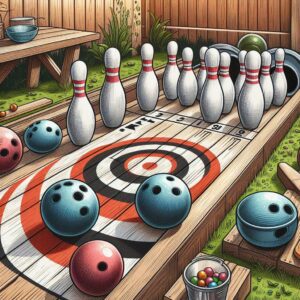Bowling is a beloved sport and recreational activity enjoyed by over 70 million people in the United States alone. With origins tracing back thousands of years, bowling remains a popular pastime thanks to iconic alley designs that have changed little over the decades. But have you ever wondered — just how wide is a regulation bowling alley?
While a four-inch round bowling ball may seem tiny in comparison to the spacious facility, exact alley specifications and dimensions are crucial for fair play. Understanding regulation measurements also comes into play when designing and constructing new bowling centers.
This article will break down key considerations around standard bowling lane widths and lengths, plus factors that contribute to typical bowling alley sizing. Read on to learn bowling facility requirements and recommendations to meet tournament-grade specifications.
Bowling Lane Length Regulations
The first measurement that contributes to the overall bowling alley width is the length of the lane itself. Regulation specifications require a lane length of 60 feet from the foul line to the headpin. This spans the ball’s full travel distance before knocking down pins.
According to United States Bowling Congress (USBC) Equipment Specifications, this 60-foot distance allows for an adequate ball roll and approach space for different types of bowlers. Shifting this length would impact the ball’s momentum and scoring dynamics.
The lane length also includes a 15-foot foul line buffer to the first pin rack, which gives bowlers adequate sliding and stepping room before the ball release point.
So a complete lane’s full dimension totals 75 feet bumper to bumper. Lane builders position foul lights precisely 12 inches past the start of the lane to mark this essential buffer zone.
Bowling Lane Width Recommendations
On the topic of bowling lane widths, regulation standards span between 41.5 to 42 inches across. This width allows for the bowling ball’s oval-like trajectory towards the pins without the risk of gutters on wider ranges. The 1.5-foot span also provides ample elbow room for bowlers’ backswings and follow-through approaches.
Wider is not necessarily better for bowling lanes despite the activity involving swinging a ball powerfully down an alley. Excess width would require bowlers to curve shots very precisely to avoid gutters, adding unfair difficulty. Lane builders also must account for the ball return system beneath the wood surface when determining lane width capabilities.
Total Bowling Alley Width Measurements
Bowling alleys contain multiple lanes side-by-side for players to take turns bowling frames. So the total dimensions speak more to the scope of the overall facility.
Typical bowling centers contain rows of even-numbered lanes, usually ranging between 4 to 8 sets wide. For example:
- 4 lane bowling alley = approx. 80 linear feet wide
- 6-lane bowling alley = approx 120 linear feet wide
- 8-lane bowling alley = approx 160 linear feet wide
Eight-lane centers allow for optimal capacity for casual and league play. Facilities may also designate special lanes for children or miniature ramp bowlers typically 3-4 feet wide. However, regulation adult lanes always adhere to the 60-foot x 42-inch dimensions for tournament-grade conditions.
Height Requirements Above Lanes
In addition to lane widths, bowling alley heights also come into play when designing bowling centers. Builders must allow adequate vertical space for bowling balls launched powerfully down the lane.
Regulation specifications advise at least 12 feet of height clearance above the lanes. This accounts for lofting balls with backspin that may initially arc higher before hooking down toward pins. Adding at least 20 inches makes sufficient room for amateur power shots and prevents ceiling damage over time.
Having adequate height also keeps the lines of sight open for players to clearly see pins get knocked down. Too low of ceilings can obstruct views and diminish the excitement. Light fixtures, screens, and other bowling alley hanging decor should not intrude on the 12-foot buffer zone either.
Considerations for Narrower Bowling Lane Widths
While regulation measurements follow precise guidelines, some niche bowling alley configurations do make exceptions for narrower widths. Installing narrow 30-36 inch lanes poses challenges yet also opens possibilities.
Benefits of narrow bowling lane construction include:
- More compact overall footprint fits constrained spaces
- Lower costs to build and maintain
- Intimate non-traditional design aesthetic
- Accommodates recreational minimalist bowlers
However, narrow lanes also come with gameplay changes. To adapt to the compressed width, builders shift elements like the gutters, ball returns, pin decks, and seating areas as needed. Narrow bowling also uses lighter smaller balls and fewer pins to accommodate the downsized lanes.
Most bowling purists oppose narrow lanes because they alter traditional play dynamics. But novelty alley venues focused more on fun and less on perfect scores welcome creative liberties with dimensions. Some use mini lanes for warm-ups before tournament play as well.
Custom Bowling Facility Construction Considerations
While regulated measurements serve recreation and sports standardization, custom bowling alley construction allows flexibility for builders’ needs when developing centers from the ground up.
Some driving factors that determine lane widths during new constructions include:
- Building space limitations or challenging dimensions
- Desired aesthetics or visibility
- Special accessibility requirements
- Number of planned lanes needing accommodation
- Budget constraints during construction
For specialized lanes like duckpin bowling, the balls and pins also size considerably smaller, allowing potential reduction of lane widths where feasible. Builders may additionally widen the approach for accessibility or use alternative surfaces besides wood for modern synthetic lanes.
Summary: Breakdown of Bowling Lane Width Regulations
To answer the opening question, regulation bowling lane widths span 41.5 to 42 inches across the boards. Combined with the uniform 60-foot length from foul line to head pin, these dimensions comply with tournament-grade standards for competitive play set forth by the USBC and professional associations.
The exact widths allow bowlers ample space for approaches, backswings, and follow-through motions when launching balls toward pins. The total dimensions also permit properly paced rolls without the risk of gutters on wider lanes.
Consider the regulation sizes whether constructing new lanes or checking existing alley conditions towards hosting championships at your bowling center.
Frequently Asked Questions
How wide is a bowling lane supposed to be?
The regulation width of a bowling lane is between 41.5 to 42 inches. This span allows room for bowling ball trajectories without the risk of gutters.
How much space do you need to build a bowling alley?
For a small 4-lane bowling alley, you need approximately 80 linear feet of space. Larger 6 to 8-lane alleys require 120 to 160+ linear feet for adequate lane lengths, seating areas, and support equipment. The ceiling height should be at least 12 feet high.
What are the dimensions of a mini bowling lane?
Mini bowling lanes designed for kids generally range between 30-36 inches wide and 15 to 20 feet long from the foul line to the pins. The compact design fits smaller venues but plays quite differently from regulation lanes.
How many boards does a bowling alley lane have?
Regulation bowling lanes consist of 39 individual hardwood boards running the length of the lane and shaped in slight convex arches. The lighter Maple boards help protect bowlers’ knees upon sliding releases.
Why do they put oil on bowling lanes?
Bowling alleys regularly apply lane oil, also called dressing, in exact patterns down the lanes to protect the wood and standardize ball reaction. Different oil ratios affect how balls hook, curve, or skid. So dressings create equal play conditions.
What is the heaviest a bowling ball can be?
USBC rules limit maximum bowling ball weights to 16 pounds for tournament scoring. Heavier balls would damage equipment more severely. Finger hole sizes relative to ball density also cannot exceed certain diameter limits either under regulations.
Is owning a bowling alley profitable?
Owning a successful bowling center can be quite profitable thanks to multiple revenue streams. In addition to lane fees, owners earn profits from selling food and drinks, hosting events, operating game arcades or pro shops on premises, and sponsoring league teams during year-round play.
Can you make bowling alley at home?
While regulation lanes take professional construction, some DIY home enthusiasts can transform basements or spare spaces into makeshift bowling alleys using plywood, plastic guards, and real reclaimed pins. Backyard homeowners may also install single outdoor bowling lanes and synthetic grass surfaces at residential homes as well.
How much space do I need for 2 bowling lanes?
Assuming regulation dimensions, two side-by-side bowling lanes need approximately 90 total linear feet when accounting for 15 feet of runway before the foul line plus 60 feet of lane length. This spans wide enough for casual one- or two-lane recreational setups.





